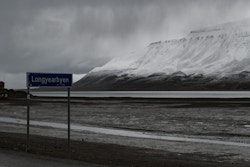Spitsbergen citizens, at the forefront of climate change
On the 10th of August 2019, Energy Observer became the first vessel in the world to join the Arctic Circle, powered solely by renewable energies and hydrogen. More than 3,000 nautical miles of historic sailing between St Petersburg and Spitsbergen, an emblematic destination in many respects.
This island in the Norwegian archipelago of Svalbard is suffering the full impact of climate change more than anywhere else on the planet. A phenomenon that Energy Observer documented during this symbolic stopover.
Globally, the Arctic is warming twice as fast as the rest of our planet. And in Spitsbergen – more broadly in Svalbard – it is even more striking. A hundred months now – more than eight years – that temperatures are above normal. At this stage, residents no longer need weather records to measure ongoing climate change. Its effects are felt on a daily basis. Rain, in particular, replaces snow. Last January was even 4.7°C warmer than usual.
Fifteen years ago, the fjord was covered with ice. The inhabitants could cross it on foot or even by snowmobile. But that is no longer the case. With the rise in temperatures, the ice no longer holds. The sea is now making waves. And some had to leave their homes, threatened by erosion.
Dislodged residents
In December 2015, an exceptional snowslide broke out over Longyearbyen, leaving two people dead. New alert tools have been implemented. For the island’s inhabitants, evacuation orders are increasing. But again, in February 2017, a snowflow destroyed two buildings. Because the speed at which global warming occurs also undermines the ability of meteorologists to make good forecasts. So, some simply choose to leave the city. The others are facing it. In March 2018, experts recommended the permanent abandonment of nearly 150 houses. And in the city center, some 40 buildings will have to be protected by snowslide barriers.

August 2019, Longyearbyen under the snow: never seen in 30 years!
Another consequence of global warming is the melting of permafrost. A thaw that destabilises homes. Thus the former hospital on the island, converted into housing in 1997, was evacuated in 2016. Cracks had appeared and he was threatening to collapse. A thaw also causes water infiltration, such as the one that recently occurred on the side of the world’s seed reserve buried under a mountain in Spitsbergen.
A disrupted ecosystem
From season to season, Longyearbyen residents also see the ecosystem in which they live evolve. Polar cod that survive by hiding under the ice have, so to speak, disappeared from the region. Polar bears, on the other hand, are being pushed into cities by melting ice floes and hunger. And a few days ago, some 200 dead reindeers that starved to death during the winter were found on the archipelago.

“The impacts of climate change are visible everywhere, on land and at sea”. Spitsbergen will definitely mark the history of Energy Observer.
At the same time, hundreds of new fishs are arriving, making local fishermen happy and forcing some to be optimistic. They hope that global warming will benefit local life. New fishing areas, therefore, but also new sea routes. What will ultimately boost industry, tourism and employment… but at what cost?
Our series about Spitsbergen
[Spitsbergen Objective] Ground zero of climate change
[Spitsbergen Objective] What are the consequences of melting ice?
[Spitsbergen Objective] In Svalbard, memory of 13,000 years of biodiversity
[Spitsbergen Objective] Longyearbyen, the fastest warming city on Earth
[Spitsbergen Objective] Polar bears threatened by climate change